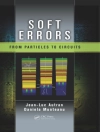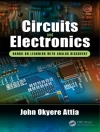The incorporation of Cognitive Radio (CR) into the Internet of Vehicles (Io V) has emerged as the Intelligent Transportation System (ITS). Section 1 covers the aspects of cognitive radio when it provides support to Io V. The challenges which limit the performance of ITS are highlighted in this chapter. These issues include unreliable delivery, the dynamic topology of Io V, routing overhead, scalability, and energy, to name a few. The issues can be considered as future research directions for a promising intelligent transportation system. Machine learning (ML) is a promising discipline of Artificial Intelligence (AI) to train the CR-based Io V system so that it can make decisions for improved spectrum utilization. The ML-enabled Io V systems can better adapt to the dynamically changing environment. Section 2 covers the applications of ML techniques to the CR-Io V systems and highlights their issues and challenges. Section 3 covers the examination of ML in conjunction with Data Science applications which further widens the scope of the readership. In CR-Io V, ML and Data Science can be collaboratively used to further enhance road safety through inter-vehicle, intra-vehicle, and beyond-vehicle networks.The channel switching and routing overhead is an important issue in CR-based Io Vs. To minimize the channel switching and routing overheads, an effective scheme has been presented in Section 4 to discuss the promising solutions and performance analysis. Meanwhile, Io V communication is a highly time-sensitive application that requires that the vehicles should be synchronized. The time synchronization in Io Vs has been highlighted in Section 5 to elaborate further on the critical metrics, challenges, and advancements in synchronization of Io Vs. As the vehicles exchange data using wireless channels, they are at risk of being exposed to various security threats. The eavesdropping, identity exposure, message tampering, or sinkhole attack to name a few. It needs time to discuss the security issues and their countermeasures to make the CR-Io V attack resilient. The last section of the book highlights the security issues and maintaining the quality of service (Qo S) of the CR-based Io Vs which concludes the book.Key features The architecture and applications of Intelligent Transportation System (ITS) in CR-Io Vs. The overview of ML techniques and their applications in CR-Io Vs. The ML applications in conjunction with Data Science in CR-Io Vs. A minimized channel switching and routing (MCSR) technique to improve the performance of CR-Io Vs. Data Science applications and approaches to improve the inter and intra-vehicle communications in CR-Io Vs. The classification of security threats and their countermeasures in CR-Io Vs. The Qo S parameters and their impact on the performance of the CR-Io V ecosystem. The targeted audience of this book can be undergraduate and graduate-level students, researchers, scientists, academicians, and professionals in the industry. This book will greatly help the readers to understand the application scenarios, the issues and challenges, and the possible solutions. All the chapters highlight the future research directions that can be taken as research topics for future research.
Syed Hashim Raza Bukhari & Muhammad Maaz Rehan
Cognitive Radio-based Internet of Vehicles [EPUB ebook]
Architectures, Applications and Open issues
Cognitive Radio-based Internet of Vehicles [EPUB ebook]
Architectures, Applications and Open issues
Compre este e-book e ganhe mais 1 GRÁTIS!
Língua Inglês ● Formato EPUB ● Páginas 216 ● ISBN 9781040052198 ● Editor Syed Hashim Raza Bukhari & Muhammad Maaz Rehan ● Editora CRC Press ● Publicado 2024 ● Carregável 3 vezes ● Moeda EUR ● ID 9689908 ● Proteção contra cópia Adobe DRM
Requer um leitor de ebook capaz de DRM












